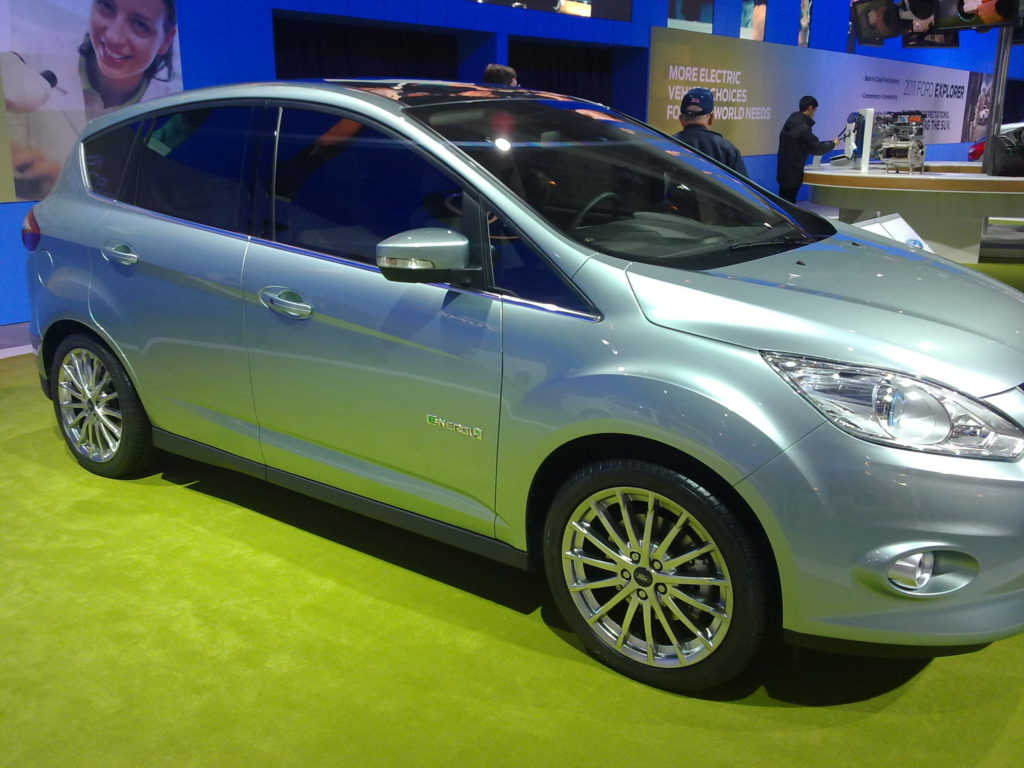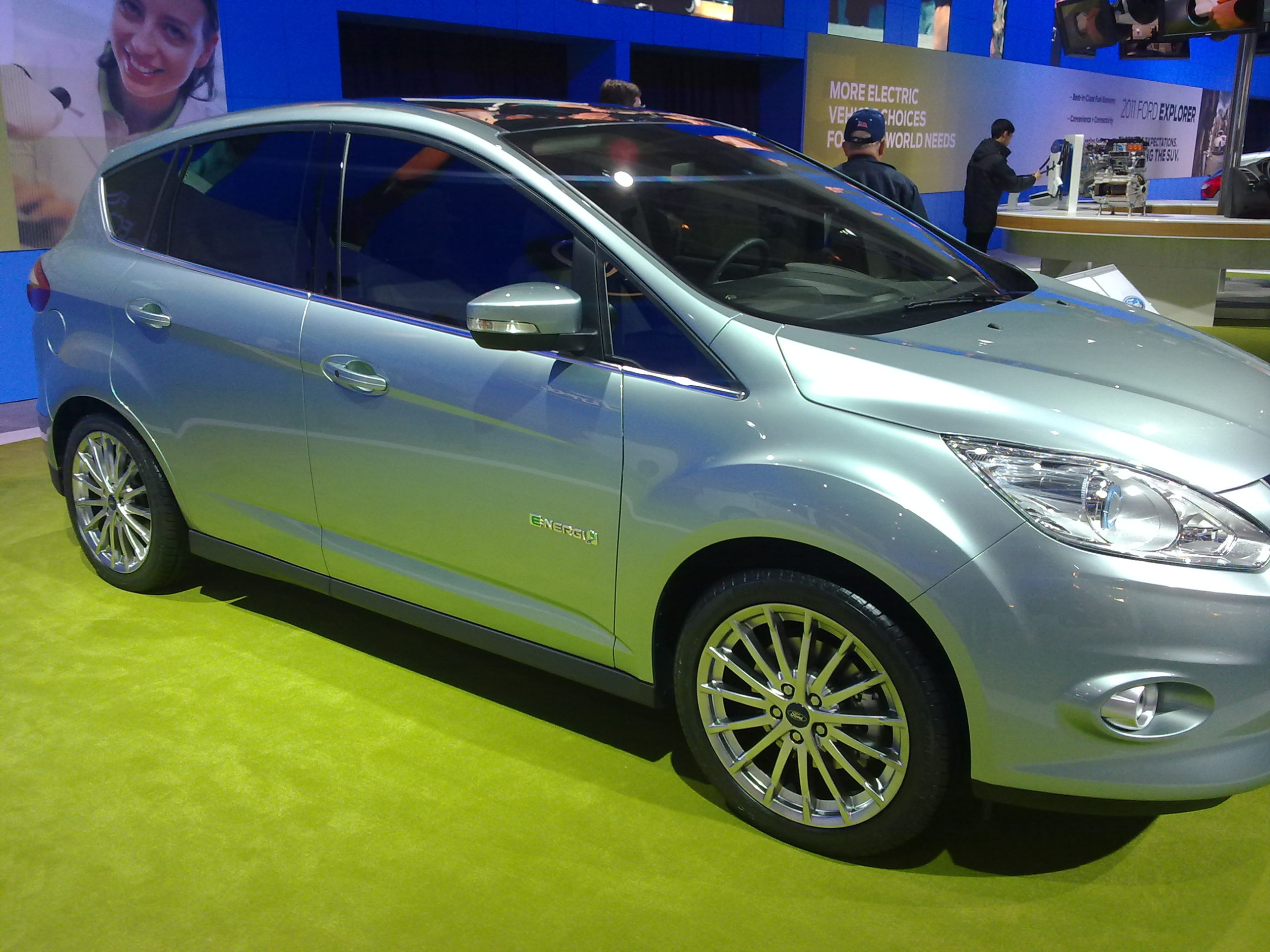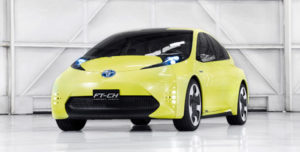Solid Nine. And that’s saying a lot, considering that most cars would probably average only a 3 or a 4.
What’s so great about the Leaf?
I had a chance to find out earlier this week when I stopped by the Nissan Leaf road show as it passed through my county. The Leaf is Nissan’s snazzy eco-friendly, all-electric car which means…it runs ONLY on electricity. It is NOT a gasoline-electric hybrid like the Ford Fusion or Chevy Volt, both of which I have also tested. The Leaf does not run on flex fuel or biodiesel or hydrogen or natural gas or anything other than electricity. It is truly gas-free.
Nissan had set up a big pavilion in the parking lot of the local mall to explain how the car works and then let people take it for a test drive. I was ready to be skeptical, since I drive a Prius (the original model, which I purchased in 2002), and love it. Instead, I fell in love with the Leaf. Here’s why.
Almost No Pollution: The Leaf’s motto is “100% electric. zero gas. zero tailpipe.” Because the car only runs on electricity, operating it generates none of the air pollutants that make smog, nor does it release the carbon dioxide that’s substantially responsible for climate change. It doesn’t even create noise pollution. In fact, the engine is so quiet, Nissan has had to build in a little “hum” to the system so you can tell the car is running!
It’s Very Zippy: The car can quickly reach speeds of 94 mph, according to the tour guides I met during my test drive (not that I ever drive that fast…). It’s also got a great turning radius so is very easy to park and maneuver, a plus in the city.
It’s Made from Recycled Parts, and Can Be Recycled: For example, the seats are crafted from recycled soda bottles. Over 95% of the components of the vehicle can be recycled at the end of its life, including metal wiring, the car frame itself, tires, and other components.
It’s Spacious and Comfortable – With Convenient Cupholders: My Prius can feel a little small if it’s carrying five passengers or for someone who’s tall and sitting in the back seat. Plus, the cupholder for the back seats was flimsy and broke soon after we brought the car home. By comparison, the Leaf feels luxuriously spacious. And the cupholders – an important feature to many drivers – are built into the side of the doors rather than take up interior space on a central console. In addition, the hatchback trunk offers enough room for a bunch of bags of groceries or luggage if you’re traveling for a couple of weeks.
Covers Most Commutes: The Leaf has gotten a lot of publicity around the fact that it only travels about 100 miles on a single battery charge. But that’s plenty for most people, whose average daily commute is closer to 40 miles per hour. Plus, you can switch between a “drive” function and an “eco” function to extend the life of the battery if needed.
Charge at Home or at a Variety of Retail Outlets: No, you don’t have the convenience of pulling into a gas station to fuel your car. You can plug it into a regular outlet at home, though it will take 20 hours to charge using a common household socket. You can install a Home Charging Dock to reduce the charging time down to 7 or 8 hours, but it’s expensive: around $2,000. You can also plug it in at an increasing number of retailers, including Best Buy, Walgreen’s, Cracker Barrell, and others. Unlike with a cell phone, you can partially recharge the battery at any time and it won’t undermine the integrity of the battery.
Lots of Cool Aps and Online Tools Help You Get the Most Out of Every Charge: An iPhone Ap lets you turn the car on remotely or check how much charge you have left. An online mapping function lets you plug in all your day’s destinations and let you know how much charge you need to cover the distance.
What are the Downsides?
No Spare Tire: As someone who’s had several flat tires over the years, it makes me nervous that this car does not come with a spare tire and the gear to change it. If I bought the car, I’d buy a spare tire and I guess I’d just have to keep it in the hatchback, but that would take up space I’d rather use for cargo.
It’s Relatively Expensive: At between $32, 700 for the standard model, and $35,200 for the upgrade (which includes a back-up viewfinder on the car’s interior console and solar panels on the hatchback for additional charging capacity), it’s pretty pricey. Even with federal tax credits of up to $7,000, the car will still cost almost $30,000. That’s cheaper than the upscale Tesla that George Clooney drives, but a lot more expensive than the current Prius after the same tax breaks.
Availability: Right now, all the 2011 Leafs are spoken for. If you want this car, you’ll have to order the 2012 model this fall and put down a $99 refundable deposit.
It’s Made in Japan: Right now, the Leaf is only made in Japan. The company is building a plant in Smyrna, Tennessee to manufacture the batteries for the car. Ultimately, said the reps,the company would like to build the entire car in the U.S., but it’s not made in America yet.
Charging Takes Time: As noted above, if you use a regular household plug, it will take 20 hours to fully recharge; if you want a faster charge, it will cost you a couple of thousand dollars to install a charging dock.
Bottom Line? I think the advantages outweigh the disadvantages. If you generally travel less than 100 miles per day and can take advantage of state and federal tax credits to lower the price, consider the Leaf.
NOTE to Nissan – When I asked a guy from the road trip demo team what amount of state tax credit U could add to the federal tax credit, he was singularly unhelpful and simply suggested I go home and check online. Why not have a list of tax credits available in every state the road trip stops in to give consumers as much info as possible about the cost savings available for a purchase of this magnitude?
WANT TO SEE MORE TEST DRIVES?
Test Drive the New Chevy Volt With Me
Ford Fusion Hybrid: Good Choice for Family Looking for High MPG
Comparing Hybrid Cars, The Honda Civic Came Out on Top for My Dad
Zip Car Comes to the Rescue (And Saves Me a Lot of Money)
Looking for Gas Saving Tips? Get Beat High Gas Prices Now: The Fastest, Easiest Ways to Save $20-$50 Every Month on Gasoline.














8 thoughts on “My test-drive of the all-electric Nissan Leaf – On a scale of One to Ten, I give it a …”
it’s either disingenuous or naive to state that the leaf doesn’t pollute. the very large (by household standards) amount of electricity required to charge the batteries will very likely be generated wholly or in part by coal, natural gas, or nuclear power stations. it’s more accurate to say that the leaf relocates its operating emissions from the tailpipe to the grid.
You’re right – I meant to note that in my blog post. However, given that the Leaf can be charged at night by excess generating capacity from the utility, its overall emissions impact is still very significantly below that of a car that burns gasoline.
The owner of the Leaf that I talked to in OC said that he has a few solar panels on his house and the net energy cost to him is 2 cents a mile. He also took advantage of all the tax rebates and saved $13,000.
The other BIG advantage our here is that it gives you access to the commuter lane without having a second passenger.
Todd, you are right that electric cars still pollute, but I don’t see anywhere in the post where she claims electric cars don’t pollute.
The fact remains electric cars are a good step in the right direction. The next step would be to work on our clean energy infrastructure.
That’s great you liked the car! I can’t wait until they become more economical, then I might look into getting one.
At this time, that kind of car is quite expensive because it is new. But it is very good for the environment. For those who can’t afford to buy this kind of car, you can practice being green by conducting regular maintenance on your car and using eco-friendly fuel.
The batteries in the car contain chemical products dangerous and very difficult to recycle, plus the life of those batteries are around 3 years old only. I am not sure electric car are more ecological in long term.
Hmmm…I’m not sure where you got your information. The batteries last much longer than that – even in my Prius, which has an electric battery, the battery is now 9 years old and going strong. All batteries contain dangerous chemicals, even a battery in a traditional gasoline powered car. Yes, recycling is key. The Volt’s manufacturers are working to ensure the battery and most of the car can be recycled.
The Nissan LEAF was also in display at last year’s SEMA. However, there are still a lot of improvements needed for the Leaf like its MP for charge.
Comments are closed.